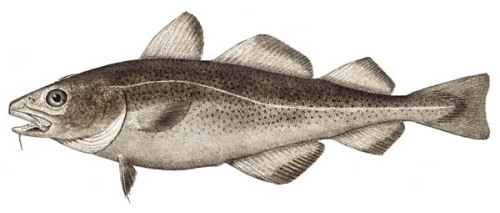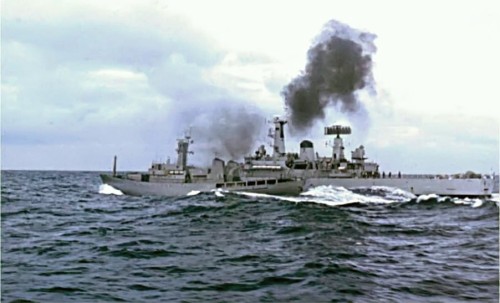The Third Icelandic Cod WarEver since the 1950’s Iceland and the UK have had a series of dispu
The Third Icelandic Cod WarEver since the 1950’s Iceland and the UK have had a series of disputes over fishing rights near Iceland. Both nations economies are heavily dependent on fishing, and ever shrinking cod supplies led to increased competition between the two nations. This even led to minor military actions when Icelandic Coast Guard ships detained British fishing boats for fishing in what Iceland claimed to be their fishing territory. Between 1958 and 1975 Three Cod War were fought between the UK and Iceland over such fishing rights. While these wars were mostly peaceful military actions, it was the Third Cod War that was the most heated, even leading to violence. During the 1970’s the UN was preparing to institute a uniform 200 mile EEZ (exclusive economic zone) for all nations. An EEZ is a zone which grants a certain nations rights to conduct commercial activities. Foreign ships can travel through it, but cannot conduct any commercial activity such as fishing or mining. Eager to jump the gun, in 1975 Iceland decided to enforce its own 200 mile EEZ before the UN adopted the policy. British fisherman mostly ignored the EEZ as it was not internationally recognized, and continued to fish within 200 miles of the Icelandic coast. As a result the Icelandic Coast Guard began a massive campaign where they either detained or cut the lines of British fishing boats within 200 miles of the coast. The UK government, also seeing the 200 miles EEZ as illegal, deployed a fleet of 22 frigates to prevent the Iceland Coast Guard from interfering with British fishing boats.Tensions quickly grew when Icelandic and British military ships met off the Icelandic coast. One of the most famous incidents occurred on December 11th, 1975 when the British support ship Star Aquarius intercepted the Icelandic Coast Vessel Þór, which was attempting to cut the lines of a British fishing boat. The Star Aquarius rammed the Þór, and the Icelanders responded by opening fire, first with blanks, then with live ammunition. The Star Aquarius rammed a second time, this time so hard it nearly capsized the Þór, forcing it to limp back to port. About a month later, the Þór was almost sunk when it was rammed by the Royal Navy Frigate HMS Andromeda.Ramming became a favorite tactic of the British, and between 1975 and 1976 there were 55 incidents of Royal Navy ships ramming Icelandic Coast Guard vessels. The tactic was so popular during the war that the Royal Navy upgraded its ships with stronger hulls to more effectively ram ships. The Icelandic Coast Guard decided it needed more firepower to protect itself, first attempting to buy warships from the US Navy, then offering to buy Mirka Class Frigates from the Soviet Union. The war finally came to an end when Iceland threatened to close a NATO base within the country. The base was mostly used by the US Military, and threats of closure caused the US to pressure the UK to back down. In the end the matter went up for international arbitration, and Iceland’s 200 mile EEZ was recognized. The British suffered no casualties during the war, one Icelandic sailor was killed by one of the rammings. -- source link
#history#cod wars#iceland#fishing#cod#royal navy


